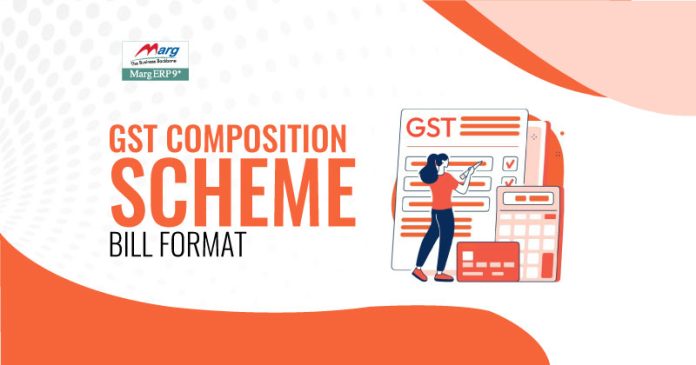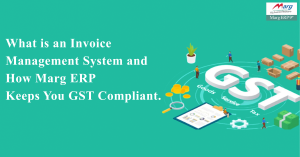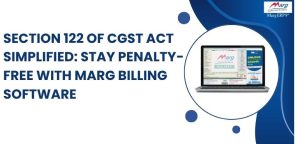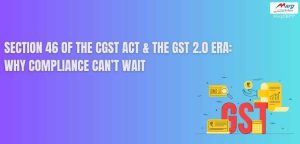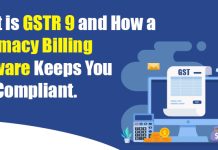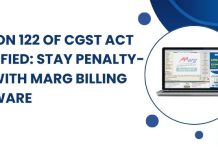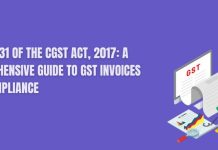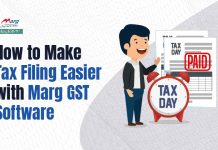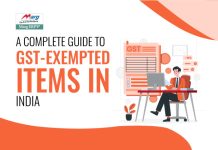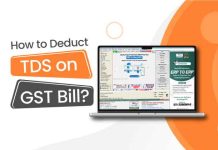The Goods and Services Tax (GST) has made tax processes simpler for businesses in India. One important part of GST is the Composition Scheme. This scheme is designed to make tax filing easier and more efficient for small enterprises, helping them manage their finances with less complexity. It reduces the amount of paperwork and the time spent on tax matters. By using this scheme, small businesses can focus more on running and growing their business instead of dealing with complicated tax rules. The goal is to make it easier for small businesses to follow tax laws without too much struggle.
What is the GST Composition Scheme?
The GST Composition Scheme is a simpler way for small businesses to pay their taxes. Instead of dealing with the complicated regular GST rules, businesses can choose this scheme if their yearly sales are below a certain limit. They pay a fixed percentage of their sales as tax and file returns every three months, which makes things easier for them.
Who Can Use the Composition Scheme?
To use the composition scheme, businesses need to meet some conditions:
- Their annual sales should not be more than ₹1.5 crores (or ₹75 lakhs in some special states).
- They should not be selling goods that are not taxed under GST.
- They should not be casual or non-resident taxable persons.
- They should not be doing business between different states.
- They should not be making certain notified goods.
Composition GST Bill Format
A composition GST bill format is different from a regular GST invoice. Since businesses under this scheme cannot charge GST separately on their bills, the format has to be specific.
Important Parts of a Composition GST Bill Format
- Supplier Details: Name, address, and GSTIN of the business.
- Bill Number and Date: A unique bill number and the date of the bill.
- Customer Details: Name, address, and GSTIN of the customer (if they have one).
- Description of Goods/Services: Details of what is being sold.
- Quantity and Unit: How much is being sold and the units used.
- Total Value: The total amount of the bill.
- Signature: Signature of the authorized person.
Example of a Composition GST Bill Format
Supplier Details:
XYZ Enterprises
123, Business Street, Delhi – 110001
GSTIN: 07XXXXX1234A1ZB
Bill Number: 001/2023-24
Date: 21st June 2024
Customer Details:
ABC Stores
456, Retail Road, Mumbai – 400001
GSTIN: 27XXXXX5678B2XC
Description of Goods/Services:
- Product A – 50 units
- Product B – 30 units
Total Value: ₹1,00,000
Signature:
Authorized Signatory
Composition Scheme Bill Format
The composition scheme bill format should follow specific guidelines to comply with GST rules. This format is designed to make it easy for businesses under this scheme to issue bills to their customers.
Detailed Composition Scheme Bill Format
- Title: Clearly mention “Bill of Supply” at the top.
- Supplier Information: Name, address, and GSTIN of the business.
- Bill Number and Date: A unique bill number and the date of the bill.
- Customer Information: Name, address, and GSTIN of the customer (if they have one).
- Description of Goods/Services: Details of what is being sold.
- Quantity and Unit: How much is being sold and the units used.
- Value of Supply: The total amount of the bill.
- Declaration: A statement saying that tax on supplies has been paid by the business.
- Signature: Signature of the authorized person.
Example of a Composition Scheme Bill Format
Bill of Supply
Supplier Information:
XYZ Enterprises
123, Business Street, Delhi – 110001
GSTIN: 07XXXXX1234A1ZB
Bill Number: 002/2023-24
Date: 21st June 2024
Customer Information:
ABC Stores
456, Retail Road, Mumbai – 400001
GSTIN: 27XXXXX5678B2XC
Description of Goods/Services:
- Product C – 20 units
- Product D – 40 units
Total Value: ₹80,000
Declaration:
We hereby declare that the tax on supplies has been paid by us under the composition scheme.
Signature:
Authorized Signatory
GST Composition Invoice Format
The GST composition invoice format is meant to simplify billing for businesses under the composition scheme. These invoices are different from regular GST invoices and do not show tax rates or amounts.
Elements of GST Composition Invoice Format
- Title: “Bill of Supply” must be at the top.
- Supplier Details: Name, address, and GSTIN of the business.
- Invoice Number and Date: A unique number for the invoice and the date.
- Recipient Details: Name, address, and GSTIN of the customer (if they have one).
- Description of Goods/Services: Details of what is being sold.
- Quantity and Unit: How much is being sold and the units used.
- Total Value: The total amount of the bill.
- Declaration: A statement saying that tax on supplies has been paid by the business.
- Signature: Signature of the authorized person.
Example of a GST Composition Invoice Format
Bill of Supply
Supplier Details:
XYZ Enterprises
123, Business Street, Delhi – 110001
GSTIN: 07XXXXX1234A1ZB
Invoice Number: 003/2023-24
Date: 21st June 2024
Recipient Details:
ABC Stores
456, Retail Road, Mumbai – 400001
GSTIN: 27XXXXX5678B2XC
Description of Goods/Services:
- Product E – 10 units
- Product F – 15 units
Total Value: ₹50,000
Declaration:
We hereby declare that the tax on supplies has been paid by us under the composition scheme.
Signature:
Authorized Signatory
Composition Dealer Bill Format
The composition dealer bill format helps keep proper records and ensures compliance with GST rules. It includes all the necessary details to make billing easy for both the business and the customer.
Comprehensive Composition Dealer Bill Format
- Title: Clearly state “Bill of Supply” at the top.
- Supplier Information: Name, address, and GSTIN of the business.
- Bill Number and Date: A unique bill number and the date of the bill.
- Customer Information: Name, address, and GSTIN of the customer (if they have one).
- Description of Goods/Services: Details of what is being sold.
- Quantity and Unit: How much is being sold and the units used.
- Total Value: The total amount of the bill.
- Declaration: A statement saying that tax on supplies has been paid by the business.
- Signature: Signature of the authorized person.
Example of a Composition Dealer Bill Format
Bill of Supply
Supplier Information:
XYZ Enterprises
123, Business Street, Delhi – 110001
GSTIN: 07XXXXX1234A1ZB
Bill Number: 004/2023-24
Date: 21st June 2024
Customer Information:
ABC Stores
456, Retail Road, Mumbai – 400001
GSTIN: 27XXXXX5678B2XC
Description of Goods/Services:
- Product G – 25 units
- Product H – 35 units
Total Value: ₹70,000
Declaration:
We hereby declare that the tax on supplies has been paid by us under the composition scheme.
Signature:
Authorized Signatory
Differences Between Regular GST Invoice and Composition Scheme Bill
Regular GST Invoice
A regular GST invoice includes many details that are not in a composition scheme bill:
- GSTIN of both the business and the customer.
- HSN (Harmonized System of Nomenclature) code for goods or the SAC (Services Accounting Code) for services.
- Taxable value of goods/services.
- Applicable GST rates (CGST, SGST/UTGST, and IGST).
- Amount of tax charged.
- Total value including tax.
Composition Scheme Bill
A composition scheme bill:
- Does not show GST rates or tax amounts.
- Does not require HSN code or SAC.
- Includes a declaration that the tax on supplies has been paid by the business.
- Is simpler and focuses only on the total value of the supply.
Benefits of the Composition Scheme
Simplified Compliance
The composition scheme makes tax compliance easier. Small businesses can avoid complicated GST filings and focus on their main business activities.
Lower Tax Rates
Businesses under the composition scheme pay tax at a lower rate than regular taxpayers. This reduces their overall tax burden and improves cash flow.
Quarterly Returns
Composition dealers file returns every three months instead of monthly. This reduces the administrative load and helps them manage their time better.
Limited Record Keeping
Record-keeping requirements under the composition scheme are simpler compared to the regular GST system. This is helpful for small businesses that may not have extensive resources for maintaining detailed records.
Limitations of the Composition Scheme
No Input Tax Credit
Composition dealers cannot claim input tax credit (ITC) on their purchases. This means they cannot reduce their tax liability by using the tax paid on their inputs.
Limited Scope
Not all businesses can use the composition scheme. Service providers (except restaurant services) and businesses doing inter-state sales are not eligible.
Competitive Disadvantage
Because composition dealers cannot issue tax invoices and pass on the tax credit, they may be less attractive to B2B customers who want to claim ITC on their purchases.
Conclusion
The GST composition scheme bill format makes tax compliance easier for small businesses. By understanding and using the right formats, composition dealers can stay compliant with GST rules and benefit from the scheme. The composition scheme offers many advantages, helping small businesses manage their tax compliance easily. However, businesses should understand the limitations and make sure they meet the eligibility criteria to fully benefit from the scheme. By following the guidelines and using the correct bill formats, composition dealers can navigate GST regulations effectively and focus on growing their businesses.
Read More:-
- What is GSTR 9 and How a Pharmacy Billing Software Keeps You GST Compliant. Managing GST compliance can be tricky for pharmacy owners, especially with multiple purchase bills, supplier returns, and input tax credit tracking. GSTR-9, the annual GST return, brings all these details together for a complete yearly summary. … Read more: What is GSTR 9 and How a Pharmacy Billing Software Keeps You GST Compliant.
- What is an Invoice Management System and How Marg ERP Keeps You GST Compliant. GST is going through a lot of changes and evolutions in recent months from GST 2.0 announced on 3rd September 2025 (effective from 22nd September 2025) to GSTR-9 Table 8A update in IMS (Invoice Management System)… Read more: What is an Invoice Management System and How Marg ERP Keeps You GST Compliant.
- Section 122 of CGST Act Simplified: Stay Penalty-Free with Marg Billing Software Section 122 of the Central Goods and Services Tax (CGST) Act deals with penalties and offences under GST law. It is aimed at curbing non-compliance such as false invoicing, mis‐claiming input tax credit (ITC), suppression of… Read more: Section 122 of CGST Act Simplified: Stay Penalty-Free with Marg Billing Software
- Section 46 of the CGST Act & the GST 2.0 Era: Why Compliance Can’t Wait Compliance is the most important part of today’s business. It enhances company’s reputation, minimises financial and regulatory risks, and improves overall operations and financial management. Therefore, you need to have a solid understanding of Sections and… Read more: Section 46 of the CGST Act & the GST 2.0 Era: Why Compliance Can’t Wait
Frequently Asked Questions
What is the GST Composition Scheme?
The GST Composition Scheme is a simplified tax payment method for small businesses. Eligible businesses pay a fixed percentage of their turnover as tax and file returns quarterly instead of monthly.
Who can opt for the GST Composition Scheme?
Small businesses with an annual turnover of up to ₹1.5 crores (₹75 lakhs for special category states) can opt for this scheme. They must meet specific criteria outlined by GST regulations.
What is a GST composition bill format?
A GST composition bill format is a specialized invoice used by businesses under the GST Composition Scheme. It includes supplier and customer details, a unique bill number, date of issue, description of goods/services, quantity, total value, and a declaration that tax has been paid.
What details are required in a composition GST bill?
A composition GST bill must contain essential details such as supplier and customer information, a unique bill number, date of issue, description of goods/services sold, quantity, total value of supply, and a declaration stating that the supplier is under the Composition Scheme and tax on supplies has been paid.
Can a composition dealer charge GST in the bill?
No, composition dealers cannot charge GST separately on their bills. They pay a fixed tax rate on their turnover and cannot collect GST from customers.
How often do composition dealers need to file returns?
Composition dealers are required to file returns quarterly, which simplifies compliance and reduces the frequency of tax filings compared to businesses under the regular GST scheme.
What is the fixed tax rate under the Composition Scheme?
The fixed tax rates under the Composition Scheme are lower than regular GST rates. For example, manufacturers and traders typically pay 1% of turnover, while restaurants pay 5%.
Can composition dealers claim Input Tax Credit (ITC)?
No, composition dealers cannot claim Input Tax Credit (ITC) on their purchases. They pay tax at a fixed rate on their total turnover without the benefit of offsetting taxes paid on inputs.
What happens if a composition dealer’s turnover exceeds the limit?
If a composition dealer’s turnover exceeds ₹1.5 crores (₹75 lakhs for special category states) during a financial year, they must transition to the regular GST scheme and comply with its provisions.
Can service providers opt for the Composition Scheme?
Generally, service providers are not eligible for the Composition Scheme except for restaurants, which can opt for it under specific conditions.
Is interstate supply allowed under the Composition Scheme?
No, businesses under the Composition Scheme are restricted to intrastate supply only. They cannot engage in interstate transactions of goods or services.
How to differentiate between a Bill of Supply and a tax invoice?
A Bill of Supply does not include GST details like tax amount and GSTIN of the supplier, unlike a tax invoice which provides these specifics.
What records must composition dealers maintain?
Composition dealers must maintain records of their inward supplies, outward supplies, stock, and tax payment details. However, the record-keeping requirements are less stringent compared to regular taxpayers.
How to switch from the Composition Scheme to regular GST?
To switch from the Composition Scheme to the regular GST scheme, a dealer must file an application on the GST portal and comply with the rules applicable to regular taxpayers.
What are the advantages of the GST Composition Scheme?
The GST Composition Scheme offers simplified compliance, lower tax rates, and reduced administrative burden with quarterly filings. It is beneficial for small businesses looking to ease their tax obligations and focus on business growth.

